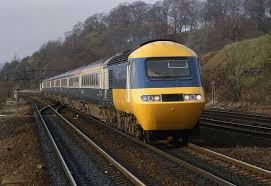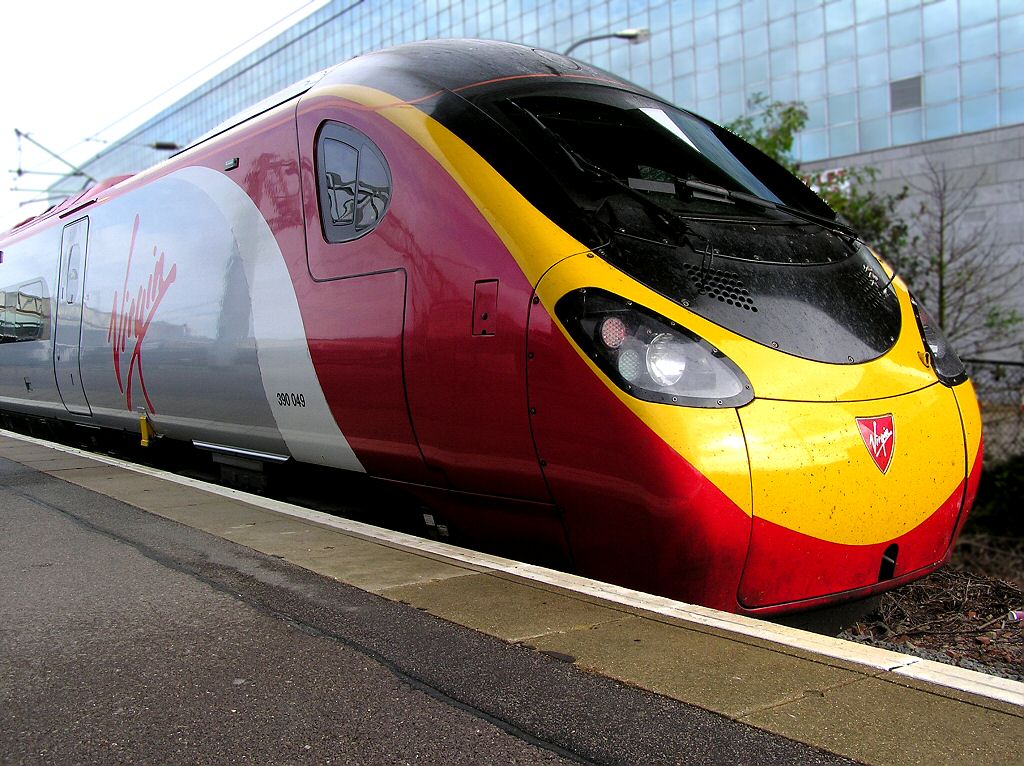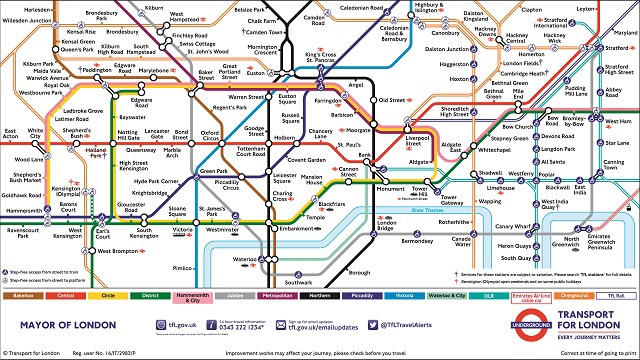.jpg) A London Underground 'S' Stock train.
A London Underground 'S' Stock train. A Class 7F at Grosmont Station, North Yorkshire Moors Railway.
A Class 7F at Grosmont Station, North Yorkshire Moors Railway..jpg) A London Underground 'S' Stock train. A London Underground 'S' Stock train. |
 A Class 7F at Grosmont Station, North Yorkshire Moors Railway.
A Class 7F at Grosmont Station, North Yorkshire Moors Railway. |
 A Class 43 HST in BR Blue and Yellow livery, c.1970/80. Class 43 43002 still runs in this livery, and is used on the Great Western Mainline.
A Class 43 HST in BR Blue and Yellow livery, c.1970/80. Class 43 43002 still runs in this livery, and is used on the Great Western Mainline. |
 A Class 43 HST in GWR Green livery, c.2015/16. This livery has only been applied to some engines, as they are to be replaced in 2020/22.
A Class 43 HST in GWR Green livery, c.2015/16. This livery has only been applied to some engines, as they are to be replaced in 2020/22. |
 A Class 345 in TfL Rail livery, soon to become the 'Elizabeth Line'.
A Class 345 in TfL Rail livery, soon to become the 'Elizabeth Line'. |
 A Class 390 (390049) 'Pendolino', used on the West Coast Main Line.
A Class 390 (390049) 'Pendolino', used on the West Coast Main Line. |
The stations on the Cotswolds Line today are as follows (not nessecarily in order): Oxford, Hanborough, Finstock, Shipton-Under-Wychwood, Charlbury, Kingham, Ascott-Under-Wychwood, Moreton-In-Marsh, Honeybourne, Evesham, Pershore, Worcester Shrub Hill, Worcester Foregate Street, Malvern Link, Great Malvern, Colwall, Ledbury and Hereford.
Services on the Cotswold Line are operated by Great Western Railway (GWR), and use the following rolling stock: Class 43 HST, Class 150, Class 153, Class 158, Class 165, Class 166, Class 170, Class 172, and Class 800. The Class 800 services are only 5 carriages as the platforms at the stations along the route can only take 5-6 carriages. Even the Class 43 HSTs do not fit on many of the platforms.

The Class 68 diesel-electric locomotives are used throughout the country, but the Chiltern Main Line is one of the only places where they are used on regualr passenger services. Built in 2014, the last batch was delivered to the UK in 2017 and they have been running up and down the Chiltern Railways routes ever since. The Class 68s replaced the Class 67s which originally hauled the services.
The Class 68-hauled services are some of the only ones of their kind in the country, with a normal locomotive and a normal set of carriages. Because of this feature, they are like the old British Rail Class 37s, which did the same job,only 50 years earlier!
Even though Chiltern Railways do own some Class 68s, Direct Rail Services (DRS) do lease some 68s to run certain passenger services. One example of this is class member 68009 'Titan', which operates along the Chiltern Main Line in DRS colours.

Here is 68009 in Direct Rail Services livery. It sometimes works alongside Chiltern-liveried Mark 3 coaching stock and Driving Van Trailers (DVTs). Because it can also operate freight services, like all Class 68s, it can work anywhere needed.
The London Underground, operated by Transport for London (TfL), is the railway system that runs around under London. There are two main sections: 'The Tube', the slightly newer, tube-shaped tunnels, and the 'Sub-surface' lines, the District, Circle, Hammersmith and City and Metropolitan.

Above : A map of the London Underground.
You can click on any of the links in the paragraphs below to view the Wikipedia page.
The first section of the London Underground was opened in 1863 by the Metropolitan Railway Company and ran between Paddington and Farringdon, linking Euston and King's Cross in the process. 38,000 passengers used the railway on the day of opening (some stations don't get that in a year). This was the first railway to be built through the centre of London. The District Railway Company was then formed, and ran between South Kensington and Westminster. This was part of a plan to make a circle around the centre of London. This 'Inner Circle' was owned by both the Metropolitan and District. It was finished in 1884, and would later become the 'Circle Line'.
The District was extended to places such as Ealing, Hounslow, Uxbridge, and other places, including Verney Junction , 50 miles from the centre of the capital. The City and South London Railway was the first deep-level railway under the city - all previous Underground lines had been made using the 'cut and cover' method. Two tunnels of ten feet two inches in diameter were built between King William Street (near modern-day Bank/Monument) and Stockwell (now part of the Northern Line) to allow for bi-directional running. The trains were elctric from the very beginning, with steam engines being dangerous in such small tunnels and stations. Due to their small, opaque windows, the carriages were nicknamed 'padded cells'. The construction of the City and South London Railway was followed by the Waterloo and City Railway (now the Waterloo and City line). This railway was built between Waterloo and Bank (then known as City), providing access to and from the main banking area of the capital to those commuting in from the south. It wouldn't be until 1994 that this route was handed over to London Underground Ltd. and later Transport for London.
The City and South London Railway station King William Street is now being used for the upgrade works at Bank/Monument station. The works include running trains through brand-new tunnels and making the existing platform wider.
Trains of the London Underground
London Underground trains do not follow the TOPS numbering system of British Railways used by the National Rail network and instead use a specialised system. Sub-Surface Stock (trains used on the Circle, District, Hammermsith & City, and Metropolitan lines) are classed with letters. The letters were used in sequential order for a while, but letters T, S and Q have been used, skipping many others. Tube Stock (trains used on the deeper Underground lines) are classed with the year they were intended to be introduced in. However, this has not always worked. For example, the D78 Stock, for use on the District Line, was actually introduced in the 1980s.
Older Underground stock looked more like the typical American rolling stock of the period, with end entrances and gates managed by a member of staff. These trains were a lot like mainline trains at the time, with bars and fancy seating. The bars were rarely used as passengers were not on the trains long enough, with the longest journey betwen two stations being only 3 minutes.
More information on the history of the London Underground can be found in the Haynes Manual for the London Underground.